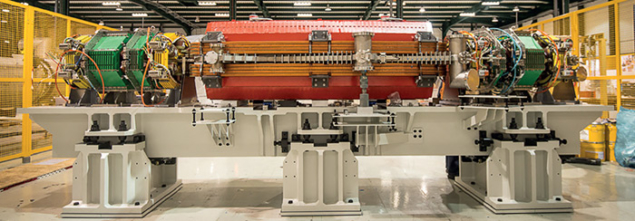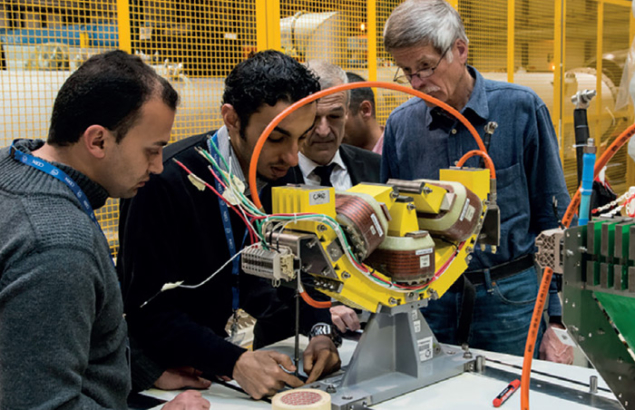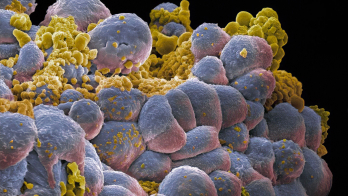
Image credit: CERN-PHOTO-201503-059-57.
The SESAME project – the Synchrotron-light for Experimental Science and Applications in the Middle East – passed an important milestone at the beginning of April, with the complete assembly and successful testing at CERN of the first of 16 magnetic cells for the electron storage ring.
Under construction in Jordan, SESAME is a unique joint venture that brings together scientists from its members: Bahrain, Cyprus, Egypt, Iran, Israel, Jordan, Pakistan, the Palestinian Authority and Turkey. The light source consists of an injector, comprised of a 20-MeV microtron and an 800-MeV booster synchrotron, which feeds a 2.5-GeV electron storage ring. CERN is responsible for the magnets of the storage ring and their powering scheme under CESSAMag – a project funded largely by the European Commission. Within the project, CERN has been collaborating with SESAME and the ALBA Synchrotron to design, test and characterize the components of the magnetic system.

Image credit: CERN-PHOTO-201503-059-9.
The SESAME storage ring is built up from 16 magnetic cells, which make up the periodic structure of the machine, together with insertion regions where special synchrotron radiation can be produced. Each of the periodic cells consists of one bending magnet (a combined function dipole–quadrupole), two focusing and two defocusing magnets (quadrupoles) and four combined sextupole corrector magnets (including orbit and coupling correction). Orders were placed in the UK for the dipoles, in Spain and Turkey for the quadrupoles, and in France, Cyprus and Pakistan for the sextupoles. Italy, Israel and Switzerland are providing the power-supply components, and Iran, Pakistan and Turkey are providing additional in-kind support to CERN in the form of material and personnel.
The integration tests at CERN, which were carried out together with colleagues from SESAME, aimed at assembling a full periodic cell of the machine. Besides the magnets themselves, this involved the girder support structure as well as the vacuum chamber through which the electron beam will pass. The success of the tests demonstrates that these subsystems work together as foreseen.
Production of the magnets and their powering scheme is now in full swing. After acceptance tests and integration for the powering, the components will be shipped in batches to Jordan, where installation and commissioning of the storage ring is planned for 2016, followed by start-up the same year. The SESAME injector, which includes a booster synchrotron, is already operational.







